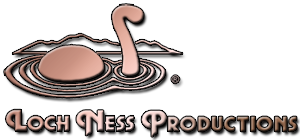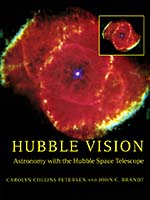Hubble Vision
Astronomy with the Hubble Space Telescope
Carolyn Takes a Look Back
Back when I was in graduate school, I worked on a Hubble Space Telescope instrument team. I joined several months before launch, and was so excited to be on the ground floor of a mission. It was an opportunity to watch from launch to deployment just how such an endeavor worked. My boss was Dr. John C. (Jack) Brandt, the co-principal investigator on the Goddard High Resolution Spectrograph, regaled all his students with tales of how the telescope was built, the long political and technological journey it took, and what he and his colleagues hoped the telescope would reveal. That set the stage for us as the telescope launched and was deployed in April 1990.
Fast-forward a month or so and disquieting rumors of problems were starting to float around. In June, Jack came back from a meeting at Goddard and gathered us all together. He explained that the telescope's mirror had spherical aberration and that there would be a public announcement very soon from NASA. We were in shock. What would happen next? Would we still have jobs? Degree programs? What about the telescope? Could it be fixed? In the storm of criticism that followed the June 21, 1990 announcement, no one in the public noticed the telescope was still gathering data. It was still doing science — but that science was heavily compromised by the aberration. That's when I started taking notes and writing up the science releases for future review.
Originally, I thought this work would go into my masters' thesis in science journalism. But, the story kept getting bigger and bigger, and eventually I abandoned that approach. Jack and I mulled over the possibilities and in the end, Cambridge University Press eagerly stepped up to take on publishing this book. Its publication was heralded as a fresh look at a telescope that had, by the time we published, redeemed itself. My thesis, published in 1996 and called "Media Treatment of the Hubble Space Telescope", turned into an examination of Hubble's trial by fire in the press beginning in 1990. Several NASA administrators requested copies of it for their use when dealing with the press. I got a master's degree out of the deal and a great publication credit! More to the point, though, it gave me (and our readers) an inside peek at a complex science program that operates in the public eye.



